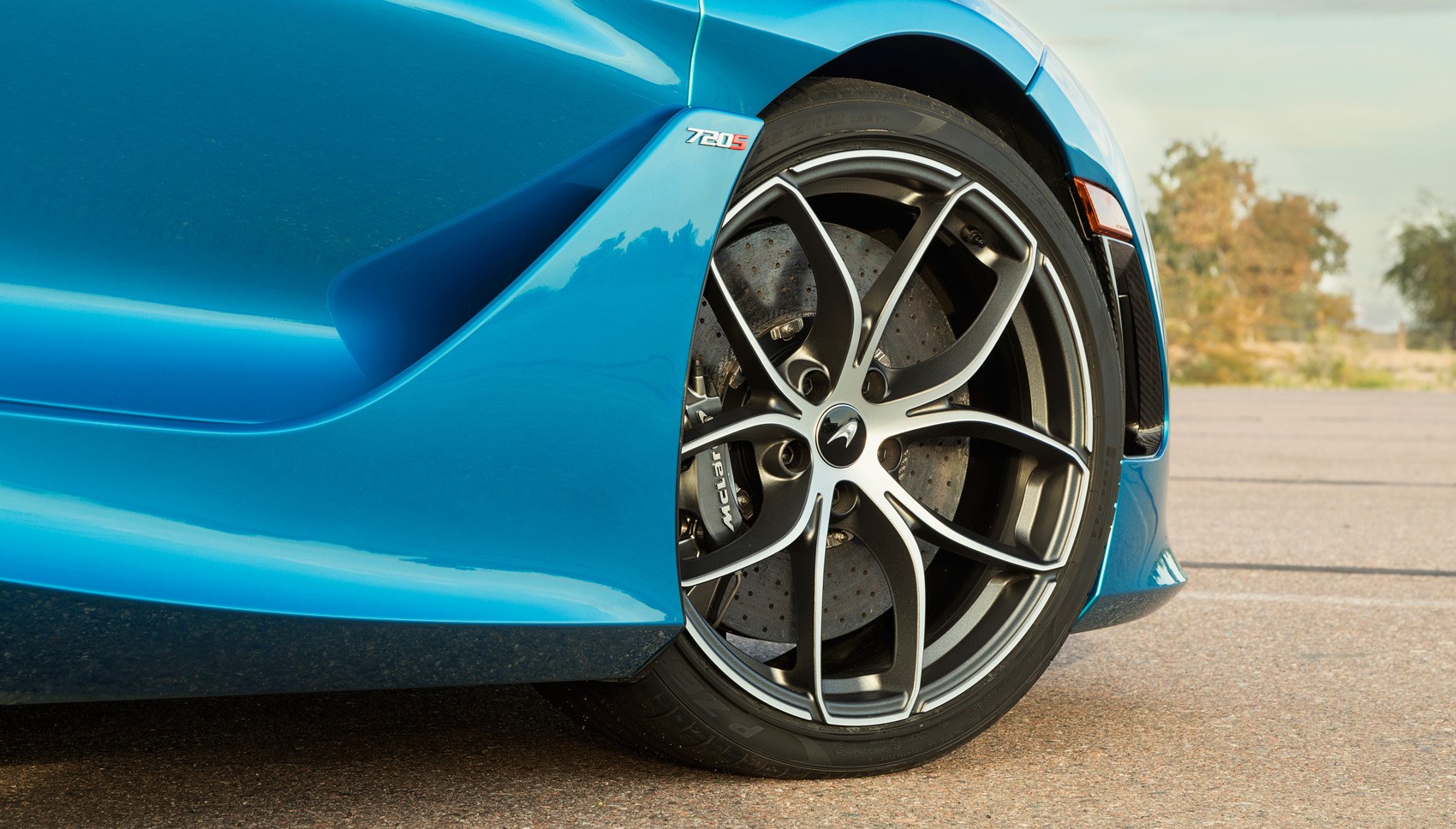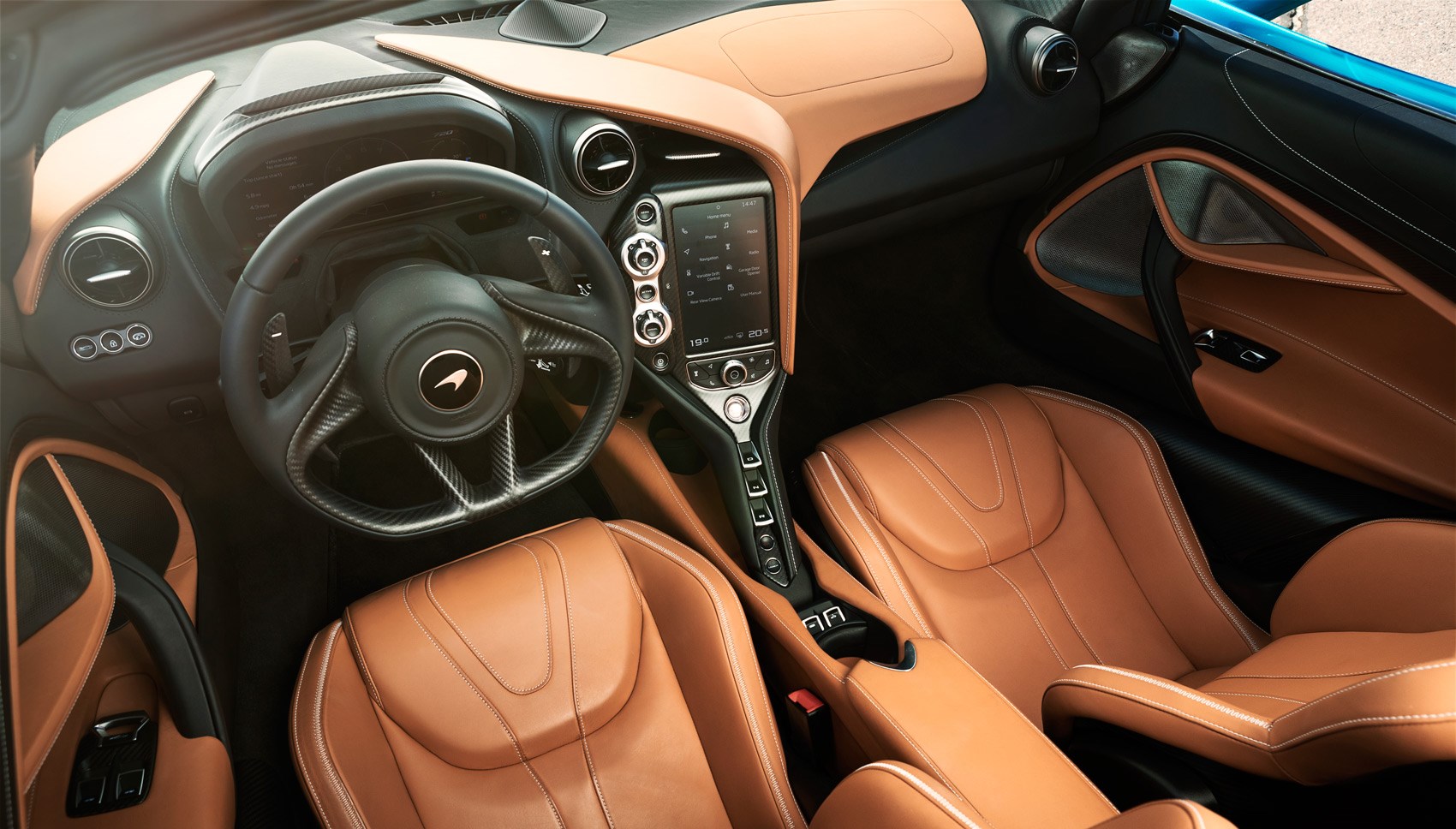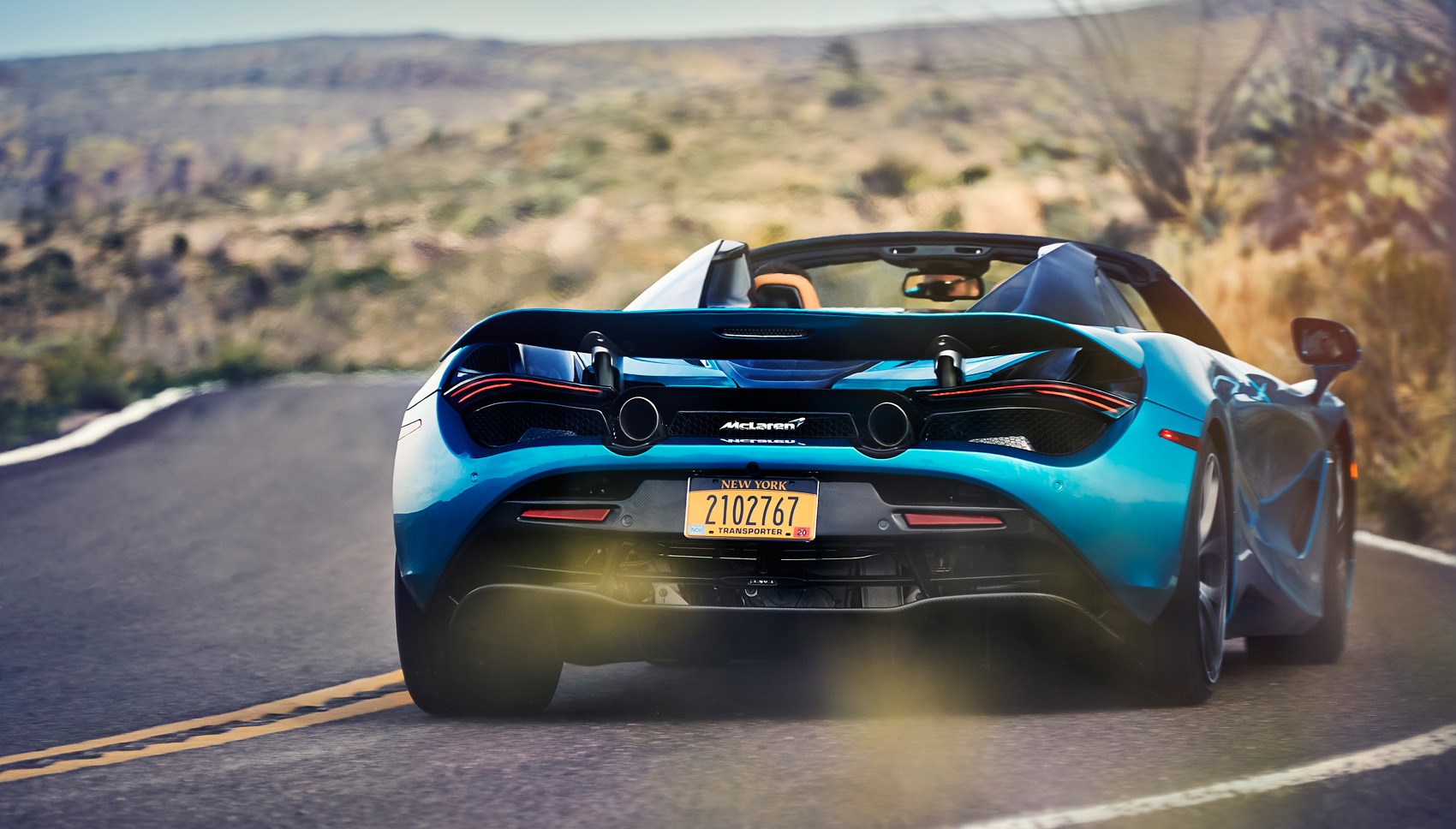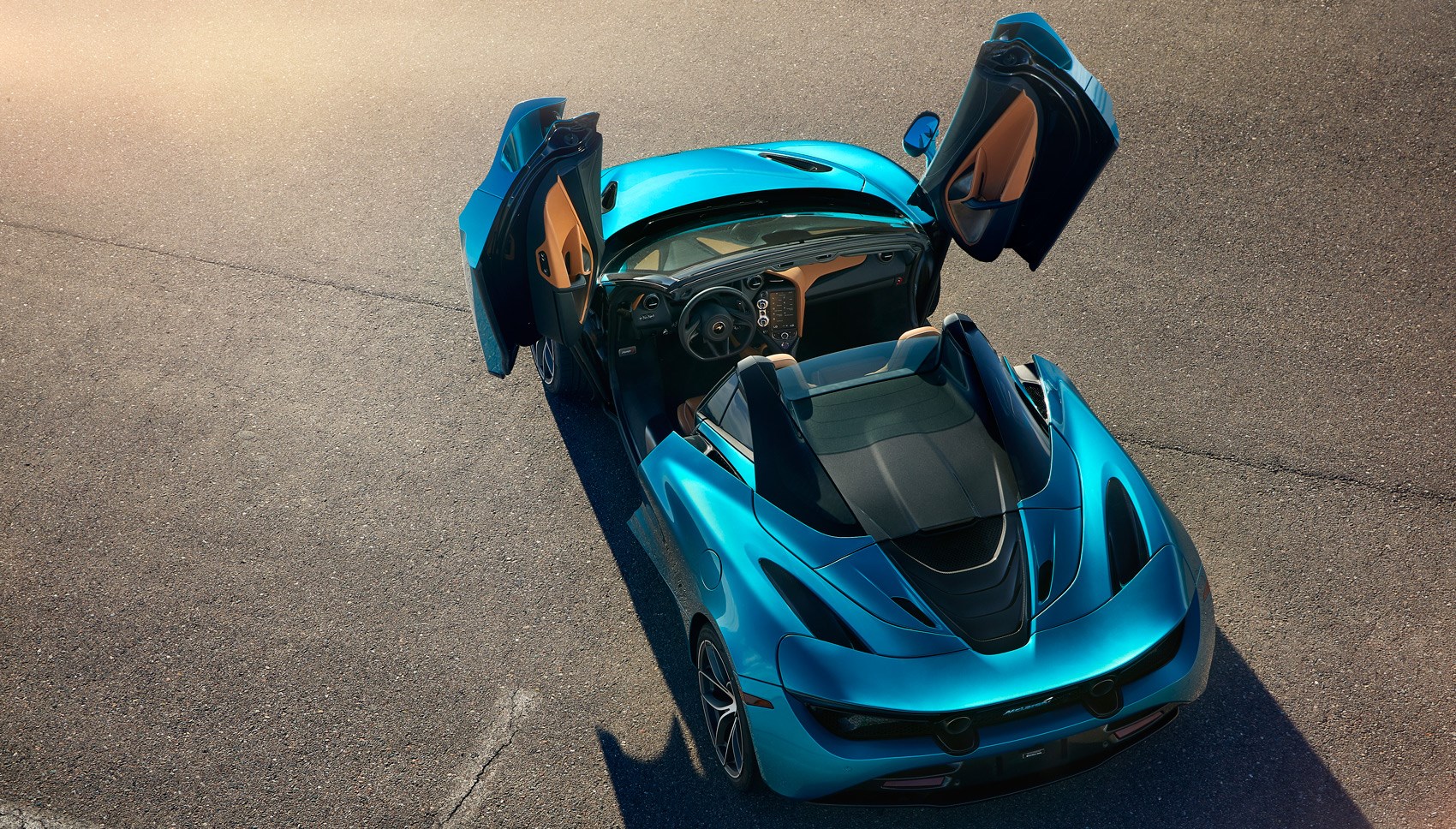► Drop-top 720S has driver appeal
► Replaces excellent 650S Spider
► From £237,000, so it’s pricey…
The new McLaren 720S Spider is more than just a 720S minus a roof. It seeks to broaden the appeal of McLaren’s new Super Series model by doing everything that the excellent 720S Coupe can do – all the sportiness, all the speed – and adding the thrill of open-top driving. It expands an already amazingly broad envelope of supercar capabilities.
Most roadsters are big on sensuality but sacrifice performance and handling. This one has all the wind-in-the-hair appeal of a droptop but mixes it with the performance of a track star. Plus, McLaren’s excellent active hydraulic suspension promises greater ride comfort than rival supercars, let alone fast roadsters.
Our full McLaren 720S coupe review

McLaren’s signature technology – a super stiff and light carbon fibre tub – needs no reinforcement to meet the demands of a convertible. Steel- and aluminum-based Spiders need buttressing to offer acceptable rigidity, and those reinforcements pile on the pounds, while still failing to offer the torsional strength of a good hardtop coupé.
OK, so how much slower is it than the Coupé?
It isn’t. The weight penalty is only 49kg – blame the folding roof and its new electric mechanism – and everything else is identical to the Spider: same power, same suspension settings, same aerodynamics with roof up. 0-62mph is the same – an incredible 2.9sec. So is top speed – 212mph roof up, 202 with it down. Only when accelerating to very high speeds does the stopwatch show any difference (0.1 sec slower to 125mph from rest, and the same margin over the standing quarter). Blame that tiny increase in weight. And that accelerative difference is so infinitesimal that not even Fernando Alonso at his sharpest would notice.

Performance is sensational. The latest twin-turbo version of McLaren’s fine Ricardo-built V8 has been enhanced in capacity to 4.0 litres (from the 650S Spider’s 3.8 litres) and 41 percent of parts are new. Maximum power jumps from 641bhp (650PS) to 710bhp (720PS), and just as important maximum torque blossoms from 500 to 568lb ft. So much power, in so little mass (1468kg with fluids and fuel), gives astonishing acceleration. To 60 from rest, it’s as quick as a P1 or a new Senna. To 125mph, it’s just over a second slower (7.9sec v 6.8). Put simply, it’s one of the world’s fastest supercars. And it happens to be a convertible.
What are the major changes from the 650S Spider?
The carbon tub has been revised: McLaren now calls it the Monocage II-S (S for Spider) and it helps to make the new car stronger and lighter than the old 650S Spider. Very similar to the 720S Coupe’s chassis, it’s the first McLaren Spider whose tub includes a carbon upper structure. It allows for the Coupe’s ultra-slim A-pillars to be retained. New glazed flying buttresses also aid all-round visibility. The new rollover protection system is now mostly carbon, not steel, and more compact in design.

Also new is the folding roof, with a one-piece carbon fibre roof panel. Roof up, it looks just like the Coupe and has the same profile and aero performance. The folding mechanism now works electrically, not hydraulically, and retracts faster (11 sec, up or down – six seconds faster than before) and at a higher speed (up to 31mph rather than 18). It’s also noticeably quieter in operation.
Other big changes include a much better infotainment system – not hard, because the old one was hopeless – and revised instrumentation, including a main instrument binnacle that can rotate from a conventional display to a minimalist track-oriented strip dominated by a bar-graph tacho, just like the hardtop. As before, steering is electro-hydraulic. McLaren (rightly) thinks pure electric systems are still insufficiently feelsome.
As always, McLaren is obsessed with weight: the 720S Spider is the lightest Spider in the class and 9kg less than the 650S Spider.
So what’s it like on the road?
Quite brilliant. From excellent driving position, to class-best all-round visibility, to the uncluttered cockpit, McLaren shows it really understands the needs of the keenest of drivers. It’s a car clearly aimed at the driving savvy rather than the badge conscious.
The ride comfort of the latest Proactive Chassis Control II suspension – hydraulically controlled and with active dampers – is a leap ahead of any conventional steel-sprung rival, yet when the going gets fast, body control is also a match for the best. Ride comfort at low speed is almost luxury saloon-like. McLarens have long been class best, for chassis excellence. The 720S – Coupe or Spider – raise the standard a notch higher, due partly to new software (developed with help from Cambridge University) and lighter uprights and wishbones. There is also Variable Drift Control – McLaren’s version of Ferrari’s Side Slip Control (SSC) – to make opp-locking and sliding more accessible. Unsurprisingly, this was hard to test on the road in Arizona, our test location. Roof-up, it’s quiet, too: quieter inside than a 650S Coupé and almost any other supercar.

The active powertrain and handling modes are a touch too complicated – Ferrari’s manettino is easier. There are too many buttons and switches and too many stages of activation. The default setting is Comfort. It used to be called Normal on McLarens but, of course, there is nothing ‘Normal’ about driving a McLaren. In Sport or Track settings, the car is superbly agile, as reactions to the throttle and steering sharpen. No car flows more sweetly or intuitively, at speed.
Only when opening the throttle at low revs in a big gear, is there any sign of lag as the twin turbos energise the gutsy V8. In a lower gear with revs raised, throttle response is sharp and brutal, as though you’ve just hitched a lift onto a passing low-flying Tornado jet. The engine roars and growls as though dinosaurs still roam the plains of Arizona. A Ferrari 488 engine still sounds more soulful, and perhaps feels a little more vivacious; there is still a wonderfully unmatched eagerness about that fine Ferrari, including its steering and its throttle response. But the McLaren is faster in absolute terms.
McLaren 720S Spider: verdict
The amazing thing about the 720S Spider is its range of virtues. It goes as hard as any supercar with all the exhilaration and high-speed prowess, and yet it rides with astonishing suppleness. This compliant ride is even more unusual for a roadster. Other stand-out dynamic qualities include the best steering, a McLaren hallmark.
On top of all that, you can motor along top-down, kissed by the sun above, and yet – owing to that outstanding chassis – the road below massages and caresses, rather than assails.

Yes, it’s expensive, at £237,000 before you start adding a tempting array of (pricey and tasty) options. Our test car came in at over £310,000. Many will rightly choose the cheaper 488 Spider and revel in its wonderful style, its character and its zestfulness. It may still be the more entertaining choice and, of course, few will be disappointed by a Ferrari.
But they’ll miss the expansive suite of skills this extraordinary car possesses. It may just be the most complete and all-round capable supercar we’ve ever seen. And, from the newbie of supercar makers – just eight years since McLaren launched the fine but imperfect 12C – that is an astonishing achievement.
Check out our McLaren reviews